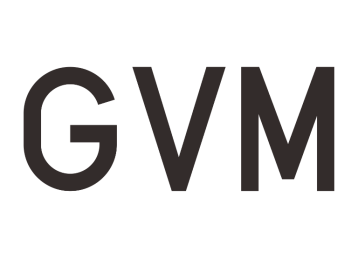Some questions raised from a number of cinematographers are asked to NETFLIX directors concerning minimum specs demanded by the distribution channel, like aspect ratioS, resolution which is worth reading.
Last year at Camerimage, and this year ar IBC, the Imago Technical Committee (ITC) invited Netflix to participate to one of our meetings. We had the pleasure to meet Netflix representatives all along the day with an intensive exchange of views, especially with Jimmy Fusil Director, Creative Technologies. This meeting launched the idea to write an article with questions from the ITC and answers from Netflix on several concerns that cinematographers are facing nowadays. From NETFLIX answered Jimmy Fusil , Miga Bär Manager, Production Technology and Phil Oatley Manager – Creative Technologies and Infrastructure, UK & EMEA.
 |  | |
| Jimmy Fusil | Miga Bär | Phil Oatley |
We think that this type of meeting and communication with a production company like Netflix will contribute in a better understanding of the complex intertwining of artistry and technology in our profession.
We want to thank Jimmy, Miga, and Phil for their kindness and constructive approach.
The ITC September 2019
THE INTERVIEW.
From Imago Technical Committee (ITC):
The Imago technical Committee highly values mutual discussions with Netflix. We are hoping that through discussions and collaboration, we both can learn from each other and help to get the best mix between the artistic responsibilities of cinematographers and the highly set goals of Netflix.
As cinematographers, there are still some concerns regarding the camera guidelines. We understand the value of the 4K specifications that Netflix has proposed and we respect this decision, but we are still collectively worried that these guidelines, actually cripple our artistic choices. We would like to ventilate some of these issues with Netflix, hoping these discussions contribute to a mutual understanding of our interests.
Netflix Reply:
The following responses are collective replies from Netflix’s Jimmy Fusil Director, Creative Technologies and Miga Bar Manager, Production Technology, Phil Oatley
Manager – Creative Technologies and Infrastructure, UK & EMEA.
Our camera specifications are intended for productions that are owned and commissioned by Netflix; this could include productions for which the distribution rights were purchased in early stages of development. For projects that are acquired in the later stages of production, or even completed, we will for the most part work within the technical decisions that were already committed to.
Like all the technical guidance we provide to Netflix productions, the aim is to protect the quality, longevity and fidelity of our creative partners’ images and vision; we believe that these are some of the most important values that we share with cinematographers and visual artists. These specs are primarily meant to ensure that the choice of camera and recording settings is not impacted by compromises of budget and/or convenience. We understand that the choice of camera is part of the authorship of the image, although a motion picture or TV show’s visual look and texture can now be shaped through a multitude of digital processes beyond the camera. We want filmmakers to have the best tools at their disposal. When there are creative imperatives that may necessitate working outside of our guidelines to achieve the desired vision, we happily collaborate with our creative partners to find the most suitable solution that best satisfies our emphasis on quality, longevity and fidelity as well as the author’s objectives.
Question 1 from ITC:
For the moment the Arri Alexa is the most popular camera among cinematographers around the world because of the Arri Color Science. We are of course thrilled about the upcoming Arri Alexa Mini LF, making our favorite camera available for Netflix productions.
“But, due to Netflix guidelines* (see at the end of article), until Arri launches the upcoming Super 35 4K sensor, we will be forced to use full frame cameras** if we choose to shoot with the Arri cameras.”
This will actually limit our palette of artistic choices, which is something we would like to talk about.
(The Imago Technical Committee is worrying about the fact to be driven by numbers. It has been difficult and quite confusing, to appreciate the Netflix decision to reject the Alexa cameras (before the LF and LF mini) from the Netflix guidelines. A 6K camera with a set of soft or vantage lenses can appear less sharp than a 3K camera with sharp lenses.
Many filmmakers and cinematographers complain about the over sharpness created by some 4K/6K cameras and they often employ different strategies (lenses or filtering) to alleviate this issue.
At this point we recommend reading the ITC report: ‘’How to control sharpness’’) HERE
Netflix :The Arri Alexa is indeed a popular camera for a multitude of reasons: a stable, familiar and well understood colorimetry and image pipeline that is focused on the emulation of film capture; availability due to its ubiquity, reliability, established brand relationships; familiar ergonomics It remains an excellent camera, and resolution/number of photosites is the only reason it is not on our approved list of cameras.
UHD/4K capture is important to us for many reasons. The first is that UHD/4K is quickly becoming the dominant display standard of our era for consumer devices. We offer it to members who subscribe at our highest tier. Because members elect to pay a little more for UHD resolution, we want to provide an authentic UHD experience with images captured at UHD resolution or higher, not synthesized from lower resolutions.
More crucially, 4K+ resolution capture returns us to the high standard established by 35mm negative nearly a century ago. Early digital cinema cameras presented a trade-off, offering some production efficiencies in return for compromised resolution and latitude. For a time, creatives made sacrifices in image quality to seize creative opportunities. Luckily, cinematographers now have more choices than ever when looking for cameras that offer high image quality and performance to produce “cinema quality” visuals. Many of us on the Creative Technologies team have worked on restoration and preservation projects, and we feel a particular responsibility in ensuring the longevity and authenticity of our creative partners’ work, at the same level that negative offered for decades. We also do not believe that creative opportunities should be limited by the display technology available today. These shows and movies will be on our service for decades, discoverable by new audiences worldwide, and we want them to look their best for as long as possible.
Note: We’re not looking for sharpness; what we seek is precision, and a minimum parity between the capture, finishing and exhibition resolutions to ensure that creative texture decisions are not impacted by resampling.
Question 2:
We are not completely certain where the guidelines are in regards to other aspect ratios except 2:1 and 16:9. What is Netflix opinion about aspect ratio’s like 4:3? There are many great examples of feature films where the aspect ratio has been an artistic choice, for example, ”Cold war” and ”Mummy”, where the aspect ratio actually changed during the movie.
Netflix:
Aspect ratio remains a creative choice. Our specs give the creative team complete freedom to choose any aspect ratio between 1.78:1 and 2.00:1 for series without having to discuss this choice with our content executives. Generally, features are approved to work in the standard cinematic aspect ratios of 1.85 and 2.39, with freedom to work within that range. Outside these boundaries, aspect ratio is a creative discussion between the authors and Netflix content executives, to align on the right decision for each story. We encourage filmmakers to consider the fact that an increasing number of viewers are watching Netflix on mobile devices. Even though mobile screens are becoming wider, imagemakers need to be aware that wider aspect ratios leave major parts of the screen unfilled, which can lead to challenges in legibility. We have examples both of wider and narrower aspect ratios used on shows on our service; we even have shows that use multiple different aspect ratios within an episode.
Question 3 :
As cinematographers, we are responsible for the image and visual style, therefore we want to be present during the grading process. More and more production companies are trying to save money and there is a tendency to keep the involvement of cinematographers during the grading process to a minimum. The visual concepts we have created during production can only fully unfold through our input during the grading process and guiding the visual effects. We would really appreciate if Netflix would recommend producers to budget for a decent amount of time for cinematographers to attend and guide the grading process.
Netflix :
Let’s be clear and dispel a common myth: there is no guidance from Netflix as to who can or cannot attend the grading sessions and for how long.
Our creative partners are free to work with the crew and facilities they want to work with. Our specifications don’t directly dictate budgeting or scheduling of our productions, or attendance; we seek to foster creative freedom in achieving our technical guidelines and standards, and being prescriptive in such matters would run counter to this. However, our guidance towards thoughtful,well communicated, and observed color management workflows aims to preserve the looks established in pre-production and on-set, and privilege the continuity of that look throughout editorial, VFX, Post and finishing. Fidelity and authenticity to the creative vision is paramount.
Question 4:
In an interview for the AFC magazine at Microsalon Paris 2019, Netflix mentioned some issues we would like to know more about. One is concerning the use of LUTS on set. Could you Please, elaborate on this?
Netflix:
LUTs are just one way to achieve what we call a “color-managed” image pipeline. From look development, to on-set monitoring, to dailies creation, through VFX and finishing, we encourage imagemakers to manage and shape their image in a scene-referred space, using output LUTs or transforms to map the resulting “corrected” image into the display’s color space. ACES (Academy Color Encoding System) is one way to achieve this, but simply correcting in the original camera color space and using LUTs to convert from there to a viewing space is also a solution. The key is to NOT make the adjustments or apply the corrections in a display space (BT 1884 for example). Instead, we strongly recommend working in such a way that the corrections can be easily communicated, replicated and applied to the original captured image during dailies, VFX and post, ensuring that everyone along the chain is monitoring the image correctly, as intended by its author. Using metadata such as CDLs or a handful of look LUTs is an effective practice.
Remark:
Netflix spent one week in France to analyze the French technical customs and traditions. Our members around the world are curious about how you will approach other artistic lensing cultures/workflows and how they can participate in building new collaborations in this field with Netflix.
Netflix:
We will continue to engage with camera professionals globally, as our international footprint grows with local offices, we will strive to build stronger relationships with the creative communities in those territories. Our team takes every opportunity to gain a deeper understanding of the production practices (and challenges) that are particular to the creative communities we engage with; it’s one of the best parts of our jobs! We don’t approach these exchanges from a Hollywood perspective; Netflix is truly a global company with an international staff of experienced professionals who have deep roots in their production community. On initiating a project, we invite the crews to both raise their concerns about our preferred ways of working and ask for guidance if parts of that may be new or unknown to them. We strive to always have an open conversation. Whether it’s through meetings with our projects’ crews, through conferences or through exploratory trip, we seek to interact with local professionals, learn from them, and share our findings globally, not only to our entire team and company, but to the entire industry as a whole. Additionally we have joined and contributed to technical sub-committees (at the ASC and SMPTE, for example) and are looking to do the same with other organizations globally.
For additional details and to contact the production support team, the following website can be leveraged Netflix Prodicle Help Center: https://help.prodicle.com/hc/en-us/sections/115000493832-Production
Post publication note
** In the first version of this article, the ITC wrote:
‘’But, due to Netflix guidelines* (see at the end of article), until Arri launches the upcoming Super 35 4K sensor somewhere, we will be forced to use full frame lenses if we choose to shoot with the Arri Alexa LF cameras’’.
But Marc Shipman Mueller ARRI Product Manager Cameras & Lenses noticed that this sentence was factually not accurate: because , we quote, ‘’It is possible to use both the ALEXA LF and ALEXA Mini LF to shoot Netflix shows with Super 35 lenses and this has been done in many cases already. The “LF 16:9” sensor mode is Netflix approved and allows the use of a variety of spherical Super 35 lenses (see link for the list of ARRI lenses*), and using a 2880 x 2880 frameline is Netflix approved (see attached white paper with list of ARRI lenses) and allows the use of ARRI Master Anamorphics or Cooke Anamorphics Super 35 anamorphic lenses, also both options that are in use’’.
The ITC thanks Marc who is absolutely right to say that this sentence was not accurate. However, when we choose a LF camera, we must still add the costs of using more data (Open gate for the scope), the slightly higher rental price (Mini LF is 15% more expensive to rent than the Mini) and the limitation of the number of Super 35 wide angle lenses lengths that can not cover all the LF cameras.





























